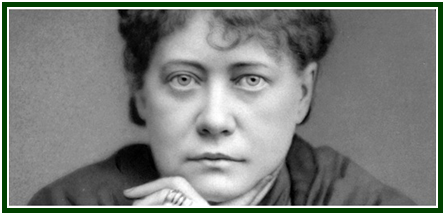The
Act of Being Born is a
Continuously
Creative Process
Carlos
Cardoso Aveline

During childhood, we
subconsciously remember the vibration pattern of earlier lives.
We recall or review at the same time the previous
phases of planetary evolution. Individual Karma gets
inspiration once more from the long term past. Before we are born, we are immersed as a sea animal in the amniotic
fluid of our young mother’s body. After birth, some time is spent in deep
meditation as the reincarnating individuality slowly approaches the new body.
Through the eyes of a newborn, Eternity itself looks at the world - and
inaugurates a new tool for the learning of the soul.
As time passes, the baby creeps as a reptile and walks
like a four-legged animal. While playing, developing different actions and
feeling joy or fear, he experiences one more time in various ways the primitive
forms of life in the planet. He essentially starts again from the point he left
in the previous life. Yet he does so having to absorb the changes in human
karma, both positive and negative, that took place during the interval.
Many therefore are the factors that get together to
build the initial impulse for the writing of a new chapter in the Book of Life.
While the scenario is different from that of the previous incarnation, the
fundamental patterns are the same. The life of the child emerges from the deep
memory of cycles completed long before, and such subconscious remembrance
constitutes the basic foundation of the new existence.[1]
There is a certain confluence between Psychoanalysis
and Theosophy. It is not by chance that Psychology recognizes the central
importance of the early years in one’s life. According to Theosophy, childhood
contains the updated material of the soul’s learning in previous existences.
The beginning of a lifetime is the map of the
treasure. Yet in its limited horizon Psychoanalysis ignores the process of
reincarnation.
While their work is effective in studying the life of
the child, the majority of psychoanalysts have no real knowledge of classic
theosophy and do not know that the elimination of suffering depends above all
on the work of Antahkarana, the living bridge
or ladder between the lower self
and the spiritual soul. In the future, psychoanalysts may expand their
views.
It is easy to see that the way we look at childhood
evolves. The images we have of the past and the future change according to the
situations of the present. The citizen’s relation to the inaugural part of his
incarnation gets both wider and deeper all the time as he learns more about
life, and about himself.
One should learn to look with detachment at the
moments of courage and fear that marked his childhood, especially on the
subconscious, supra-conscious and non-verbal levels. The main feelings of
enthusiasm or confusion, the positive guiding lights and the most important
decisions in childhood remain influential across the various phases of one’s
life. Such a karmic heritage contains
the key to the meaning of one’s previous incarnation, and it helps define the
facts and potentialities of present and future times.
As we interpret and decode the central feelings of
childhood, we liberate them from blindness and from automatism, and see in them
wider, sacred meanings.
The relation we had during infancy with the authority, the relation with other
persons and our accumulated image of ourselves are factors we must carefully
examine, for if seen as patterns they
have a decisive importance in more than one lifetime. Yet they also evolve and
change at each new existential situation.
The lower self, which contains the immortal soul, is
no doubt the hero of the journey.
Imperfect, precarious, it lives the supreme adventure
of present incarnation. It tries to meet the challenges before him. It follows
the guidance coming from his master, the higher self. Like Hercules, human
beings are semi-mortals for they die in their lower and physical half, but live
permanently as spiritual souls.
The act of being born is, therefore, a continuously
creative process. At each decisive moment in life, the meanings of the same
childhood experiences are renewed. When you are 20 years old, you have a
certain view of your first years as a child. Once you are 40, 60 or 80, the same
period is seen in different ways and the lessons transmitted are deeper.
As the pilgrim proceeds along the line of time, some
barriers dissolve, seeds germinate, walls fall down and new buildings of inner
knowledge are made. Each cycle of 24
hours breaks a new level of the protective amniotic sac which prevented a wider
perception. Just as his brother, the Sun, the pilgrim is born again, layer by
layer, every day.
NOTE:
[1] See “The Cosmic Creation in Every Foetus”
and “The Process Between Two Lives”.
Think about the contents of “Whether the Blessings Of Devachan Are Mayavic”.
000
The article “Youth and Old Age in One’s Soul” was published on the associated websites on 06 September 2020. It is also part of the August 2019 edition of “The Aquarian Theosophist”, pp. 1-3. The Aquarian did not indicate the name of the author. Original title: “The Youth and Old Age in One’s Soul”.
000
Read more:
000

Helena Blavatsky (photo) wrote these words: “Deserve, then desire”.
000

